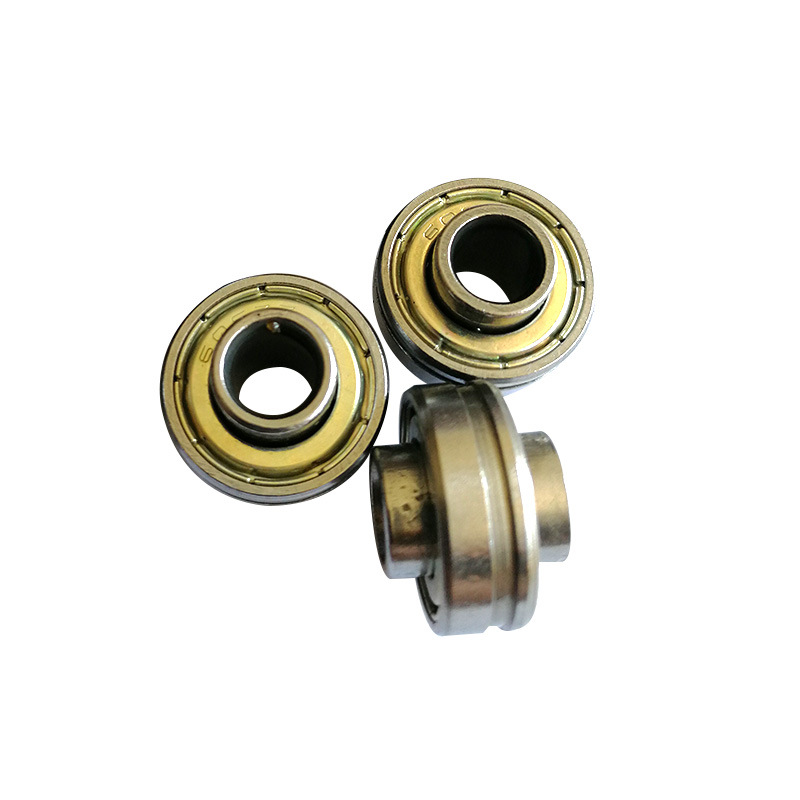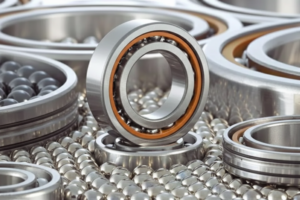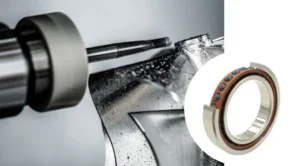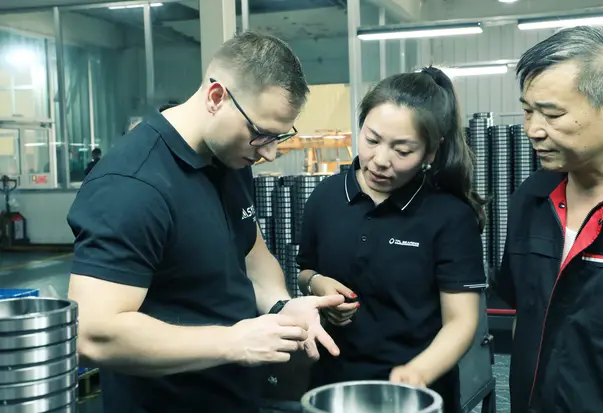Introduction
Have you ever struggled with aligning tiny bearings in your machinery? Meet the miniature ball bearings with extended inner rings – small but mighty components that solve big problems in precision engineering!
These bearings look almost identical to standard miniature ball bearings, except for one clever tweak: their inner rings are intentionally lengthened. Think of it as a “built-in handle” that transforms how these bearings perform. Let’s dive into why this design matters and how it can benefit your projects!

Why Do Some Miniature Ball Bearings Have Extended Inner Rings?
Common Challenges in Standard Miniature Bearings
Standard miniature bearings often cause headaches:
- Alignment struggles Short inner rings turn precision installation into a guessing game.
- Sizing headaches Microscopic size differences = major slippage risks.
- Removal roulette No safe grip points turn maintenance into a damaged gamble.
How Extended Inner Rings Solve Real Engineering Problems
The extended inner ring isn’t just a minor tweak – it delivers three concrete advantages:
- Direct Shaft Integration The lengthened inner ring (typically 2-5mm longer than standard) allows direct press-fitting onto shafts without requiring:
- Separate adapters
- Locking collars
- Precision-machined shoulder stops
- Zero-Tool Installation The extended section provides:
- A visual alignment guide during mounting (no laser tools needed)
- A secure clamping surface for standard bearing pullers
- Built-in spacing equivalent to 0.5-1mm washers
- Real-world impact: Medical device manufacturers report 90% reduction in installation errors.
- Enhanced System Rigidity By increasing the inner ring’s contact area with shafts by 30-50%, it:
- Reduces radial play by up to 0.002mm
- Improves vibration resistance at >15,000 RPM
- Distributes loads more evenly (critical for linear guide systems)
Design and Structural Differences
Standard vs. Extended Inner Ring Bearings: Key Comparisons
| Feature | Standard Bearings | Extended Inner Ring Bearings |
| Installation Tolerance | Low (needs precision) | High (saves 15-30% setup time) |
| Best For | Basic low-load systems | High-precision, vibration-prone environments |
| Lifespan | Middle | 20-40% longer (reduced edge stress) |
When to Choose Flanged Extended Inner Ring Ball Bearings
You can add a flange (outer rim) if your application requires:
- Axial load support: Prevents sideways movement in drones or gearboxes.
- Simplified mounting: The flange acts as a built-in spacer/stopper.
- Vibration resistance: Critical for CNC spindles or robotics joints.

Material Guide: Stainless Steel vs. Alternatives
- Stainless Steel (440C/304): Ideal for medical tools or food processing (rust-proof).
- Chrome Steel (52100): Budget-friendly choice for high-load industrial use.
- Hybrid Ceramic: For extreme conditions (high temps, electrical insulation).
Bearing Material Comparison Table

| Characteristic | Ceramic Bearings | Chrome Steel Bearings | Stainless Steel Bearings |
| Max Speed | ★★★★★ (35k rpm) | ★★★★☆ (18k rpm) | ★★★☆☆ (12k rpm) |
| Noise/Vibration | ★★☆☆☆ (25-30 dB) | ★★★☆☆ (35-45 dB) | ★★★★☆ (40-50 dB) |
| Electrical Resistance | ✔️ Insulated (>1000MΩ) | × (Conductive) | × (Conductive) |
| Maintenance Cycle | 5000 hours (Dry Film) | 2000 hours (Grease) | 1500 hours (Oil) |
| Cost Level | ★★★★★ (Premium) | ★☆☆☆☆ (Most Affordable) | ★★★☆☆ (Mid-Range) |
| High Temp Resistance | 800℃ Air 1200℃ Inert Gas | 150℃ Standard 300℃ Treated | 300℃ Standard 500℃ Enhanced |
| Thermal Sensitivity | -3% lifespan/100℃↑ | -8% lifespan/10℃↑ | -12% lifespan/10℃↑ |
| Cost-Effectiveness | ★★☆☆☆ (Specialized) | ★★★★★ (Industrial) | ★★★☆☆ (Corrosive Environments) |
“Cost ratings based on global market averages. Actual prices vary by region and supplier. Star ratings compare relative costs within bearing categories.”
Real-World Applications: Where Are Extended Inner Ring Ball Bearings Used?
Medical Equipment & High-Precision Devices
Surgical robots use these bearings to achieve sub-micron positioning accuracy. The extended inner ring minimizes “stick-slip” effects during delicate procedures.
Robotics & Motion Control Systems
In collaborative robot arms, extended inner rings:
- Absorb shock from sudden direction changes
- Reduce audible noise by 30-50% compared to standard bearings
- Allow quick bearing replacement without disassembling entire joints
Aerospace & Heavy-Duty Machinery
From satellite antenna rotators to turbine sensors, these bearings withstand:
- Temperature swings (-60°C to 300°C)
- High vacuum conditions
- Corrosive chemicals (with proper material selection)
Choosing the Right Extended Inner Ring Ball Bearing for Your Application
3 Signs You Need an Extended Inner Ring Ball Bearing
- Frequent bearing replacements due to mounting damage
- Visible wear patterns concentrated at bearing edges
- Alignment takes over 10% of your assembly time
Selection Checklist
- Load Type:
- Radial loads → Standard extended inner ring
- Combined loads → Flanged + extended inner ring
- Speed:
- <10,000 RPM: Chrome steel
- >10,000 RPM: Hybrid ceramic
- Environment:
- Humid → Stainless steel with seals
- High temp → High-grade steel with special grease
Pro Maintenance Tips
- Lubrication: Use synthetic grease (NLGI 2 grade) every 6 months
- Inspection: Check for:
- Cracks in the extended section (use 10x magnifier)
- Discoloration (indicates overheating)
- Storage: Keep in sealed bags with desiccant to prevent corrosion

Conclusion: Is an Extended Inner Ring Ball Bearing the Right Choice?
If your equipment demands precision, durability, and easy maintenance, extended inner ring bearings are likely the perfect solution. Their smart design tackles alignment headaches while boosting performance in tight spaces.
No matter what your needs are, you can find suitable bearings in TFL Bearings. We provide bearings of various sizes that are high quality and cost-effective.





